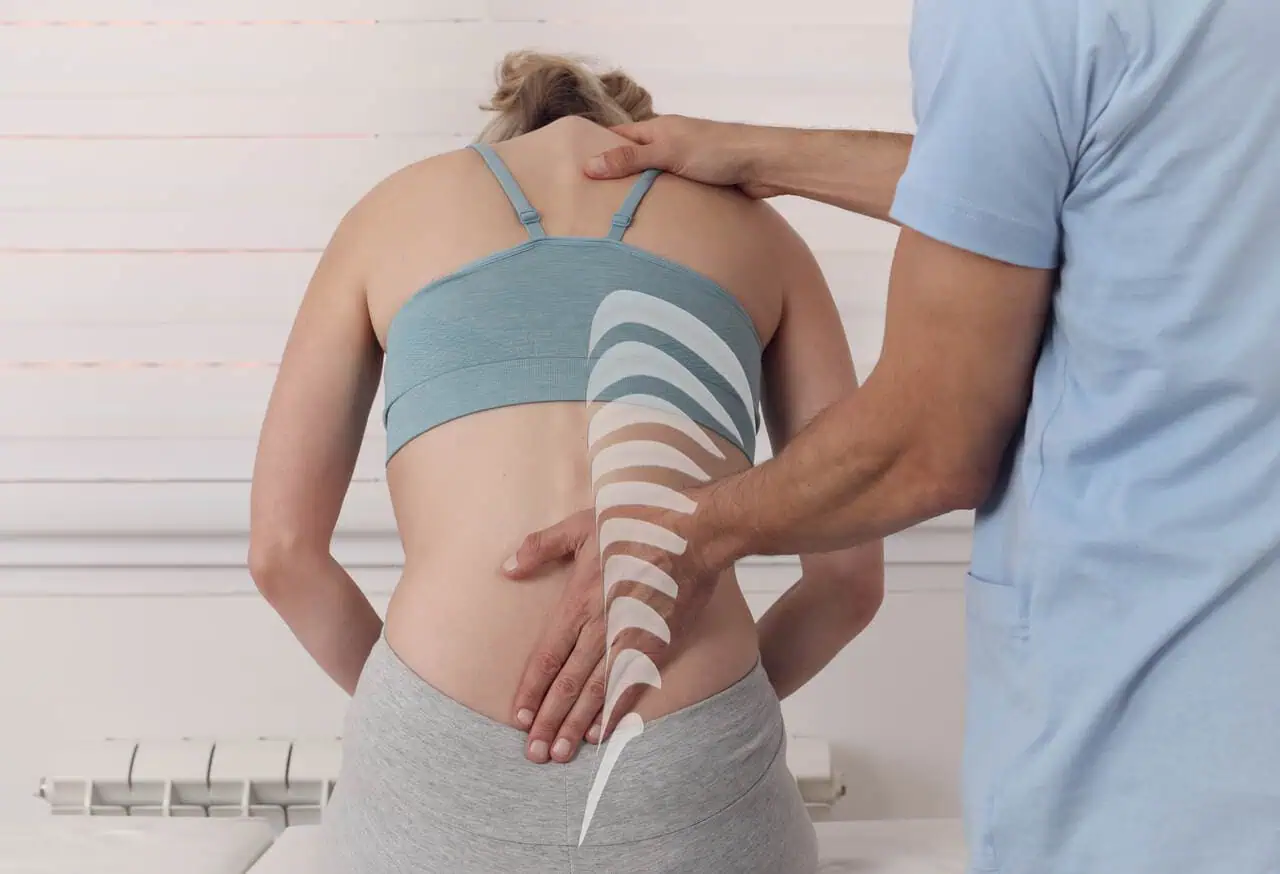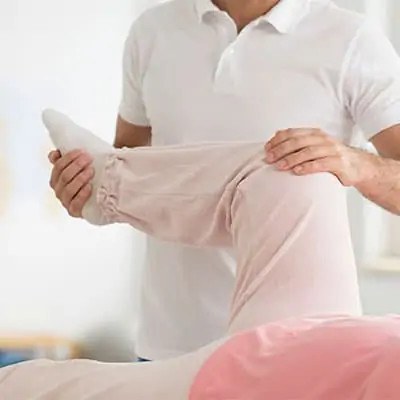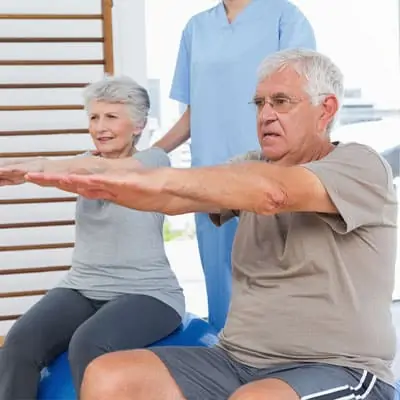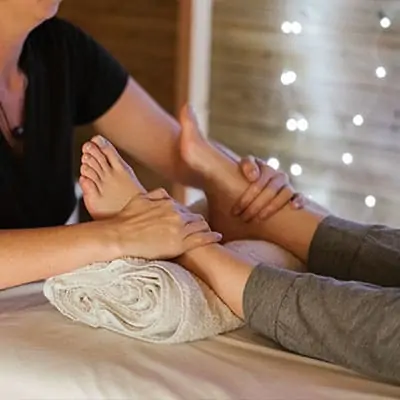Understanding Scoliosis
To effectively manage scoliosis, it’s important to first understand what it is and the different types and causes of this condition.
What is Scoliosis?
Scoliosis is a medical condition where your spine curves sideways. This curvature can occur in a “C” or “S” shape. Scoliosis can affect individuals of all ages, although it is commonly diagnosed during adolescence. The condition can range from mild to severe, depending on the degree of the spinal curve.
| Severity | Degree of Curve (Cobb Angle) |
|---|---|
| Mild | 10°-20° |
| Moderate | 20°-40° |
| Severe | >40° |
Types and Causes of Scoliosis
Scoliosis can be classified into several types based on its origin and characteristics. Understanding these categories helps in determining the most effective scoliosis treatment.
Idiopathic Scoliosis
Idiopathic scoliosis is the most common type, accounting for approximately 80% of cases. The exact cause is unknown, but it is believed to involve genetic factors. This type typically manifests during the growth spurt before puberty.
Congenital Scoliosis
Congenital scoliosis occurs due to abnormalities in the vertebrae that develop before birth. These abnormalities can lead to a curved spine as the child grows. Early detection and intervention are crucial for managing this type.
Neuromuscular Scoliosis
Neuromuscular scoliosis is associated with neurological conditions that affect the muscles, such as cerebral palsy or muscular dystrophy. These conditions lead to muscle imbalance, resulting in spinal curvature.
Degenerative Scoliosis
Degenerative scoliosis primarily affects adults and is caused by the degeneration of the spinal discs and joints. This type of scoliosis is often accompanied by scoliosis pain and can impact mobility.
| Type | Common Causes |
|---|---|
| Idiopathic | Unknown, possibly genetic |
| Congenital | Vertebral abnormalities |
| Neuromuscular | Neurological conditions |
| Degenerative | Spinal degeneration |
Understanding the types and causes of scoliosis is essential for effective management. Early detection and individualized treatment plans can significantly improve outcomes. For more information, explore our articles on scoliosis diagnosis and scoliosis screening.
Importance of Scoliosis Management
Proper management of scoliosis is essential for maintaining overall health and quality of life. Understanding the effects of untreated scoliosis and the goals of effective management can help you take proactive steps in addressing this condition.
Effects of Untreated Scoliosis
When scoliosis is left untreated, it can lead to a range of physical and emotional issues. The severity of these effects can vary based on the degree of curvature and the individual’s overall health. Here are some of the potential consequences:
- Chronic Pain: Untreated scoliosis can result in persistent pain, particularly in the back and shoulders. This pain can become more severe over time, impacting daily activities and reducing your quality of life. Learn more about scoliosis pain.
- Respiratory Issues: Severe spinal curvature can affect lung function, making it difficult to breathe and engage in physical activities.
- Cardiovascular Problems: In extreme cases, the abnormal curvature can compress the heart and other organs, leading to cardiovascular complications.
- Mobility Limitations: Scoliosis can restrict your range of motion, making it difficult to perform everyday tasks.
- Emotional Impact: The physical deformity caused by scoliosis can lead to low self-esteem and social anxiety, especially in children and adolescents. Discover more about scoliosis in children.
Goals of Scoliosis Management
Effective scoliosis management aims to minimize the negative effects of the condition, improve overall function, and enhance quality of life. Here are the primary objectives:
- Reducing Curvature Progression: One of the main goals is to prevent the spinal curvature from worsening. This may involve regular monitoring, physical therapy, and the use of braces. Learn more about different scoliosis brace options.
- Alleviating Pain: Managing pain through physical therapy, exercise, and other interventions is crucial for maintaining daily function. Explore various scoliosis exercises that can help.
- Improving Respiratory Function: Ensuring that lung function is not compromised by the spinal curvature is essential for overall health.
- Enhancing Mobility: Maintaining a good range of motion and physical activity is important. This can be achieved through targeted exercises and physical therapy. Check out scoliosis physical therapy.
- Boosting Self-Esteem: Addressing the emotional and psychological impact of scoliosis is also a key component of comprehensive management. Support groups and counseling can be beneficial. Visit our page on scoliosis awareness for more resources.
| Goal of Management | Description |
|---|---|
| Reducing Curvature Progression | Preventing the spinal curvature from worsening |
| Alleviating Pain | Managing and reducing chronic pain associated with scoliosis |
| Improving Respiratory Function | Ensuring lung function is not compromised |
| Enhancing Mobility | Maintaining range of motion and physical activity |
| Boosting Self-Esteem | Addressing emotional and psychological impacts |
Understanding the importance of managing scoliosis can help you take the necessary steps to mitigate its effects. Early intervention, regular monitoring, and a personalized treatment plan are crucial for effective management. For more information on different approaches to treatment, explore our article on scoliosis treatment.
Advanced Techniques for Scoliosis Management
Effective scoliosis management requires a multifaceted approach. Advanced techniques in the field include physical therapy and exercise, bracing options, and surgical interventions.
Physical Therapy and Exercise
Physical therapy and exercise play a pivotal role in managing scoliosis. Tailored exercises can help strengthen the muscles supporting the spine, improve posture, and reduce discomfort. Engaging in a regular exercise regimen designed specifically for scoliosis can enhance flexibility and mobility.
Physical therapy sessions often involve a variety of exercises, including stretching, strengthening, and balance activities. These exercises aim to reduce the curvature and improve overall spinal health. For detailed exercises, explore our article on scoliosis exercises.
| Exercise Type | Purpose | Examples |
|---|---|---|
| Stretching | Increases flexibility | Hamstring stretches, cat-cow stretch |
| Strengthening | Builds muscle support | Plank, back extensions |
| Balance | Improves stability | Balance board exercises, single-leg stands |
Bracing Options
Bracing is a non-surgical method used to prevent the progression of scoliosis, especially in growing children and adolescents. Braces are designed to hold the spine in a straighter position and prevent further curvature. There are different types of braces, each tailored to the specific needs of the patient.
The most common types of braces include the Boston brace, the Milwaukee brace, and the Charleston bending brace. The choice of brace depends on the location and severity of the curvature, as well as the patient’s age and growth potential. For more information on braces, visit our article on scoliosis brace.
| Brace Type | Description | Best For |
|---|---|---|
| Boston Brace | Underarm brace, worn full-time | Moderate scoliosis |
| Milwaukee Brace | Full-torso brace, with neck ring | High thoracic curves |
| Charleston Bending Brace | Worn at night, bends spine opposite to curve | Mild to moderate scoliosis |
Surgical Interventions
In severe cases of scoliosis, surgical intervention may be necessary. Surgery is typically considered when the curvature is greater than 45 degrees and is progressing rapidly. The primary goal of scoliosis surgery is to correct the spinal curvature and stabilize the spine.
The most common surgical procedure for scoliosis is spinal fusion. This procedure involves fusing two or more vertebrae together to prevent further curvature. Metal rods, screws, and hooks are often used to hold the spine in the correct position during the fusion process. For more details on surgical options, visit our article on scoliosis treatment.
| Surgical Procedure | Description | Indications |
|---|---|---|
| Spinal Fusion | Fuses vertebrae using bone grafts and hardware | Severe, progressive scoliosis |
| Growing Rods | Adjustable rods that grow with the child | Young children with progressive scoliosis |
| Vertebral Body Tethering | Uses a flexible cord to straighten the spine | Moderate scoliosis in growing children |
These advanced techniques provide a comprehensive approach to managing scoliosis, ensuring that you can find the most effective treatment plan tailored to your needs. For additional resources and support, explore our articles on scoliosis physical therapy and scoliosis diagnosis.
Precision in Treatment
Effective management of scoliosis relies heavily on precise and personalized treatment approaches. This section delves into the importance of early detection, the creation of individualized treatment plans, and the critical role of continuous monitoring.
Importance of Early Detection
Early detection of scoliosis is crucial for effective management. Identifying the condition at an initial stage allows for timely intervention, which can significantly slow or halt the progression of the spinal curvature. Early screening, particularly in children and adolescents, is essential. Regular check-ups and awareness of scoliosis symptoms can aid in early identification.
| Age Group | Recommended Frequency of Screening |
|---|---|
| Children (10-14 years) | Annually |
| Adolescents (15-19 years) | Every 2 years |
| Adults | Every 5 years or as needed |
Individualized Treatment Plans
Each case of scoliosis is unique, requiring a personalized treatment plan tailored to the specific needs of the individual. Factors such as the degree of curvature, the patient’s age, and the underlying cause of scoliosis play a significant role in determining the appropriate treatment approach.
Individualized treatment plans may include a combination of physical therapy, bracing, and possibly surgical interventions. For example, a scoliosis brace may be recommended for growing children with moderate spinal curves, while adults might benefit more from scoliosis exercises for adults and physical therapy.
| Treatment Option | Best Suited For | Goals |
|---|---|---|
| Physical Therapy | Mild to moderate curves | Strengthen muscles, improve posture |
| Bracing | Moderate curves in growing children | Prevent curve progression |
| Surgery | Severe curves or failure of other treatments | Correct spinal curvature |
Monitoring Progress
Continuous monitoring is vital to evaluate the effectiveness of the treatment plan and make necessary adjustments. Regular follow-ups with healthcare providers help track the progression of the curve and the patient’s response to treatment. Monitoring tools may include physical examinations, X-rays, and patient-reported outcomes.
| Monitoring Method | Frequency |
|---|---|
| Physical Examination | Every 6 months |
| X-rays | Annually or as needed |
| Patient Feedback | Ongoing |
Adjustments to the treatment plan are made based on the patient’s progress. This might involve modifying exercise routines, adjusting brace settings, or considering alternative treatments. For more detailed information on managing scoliosis through physical activity, check our article on scoliosis exercises.
By focusing on early detection, individualized treatment plans, and continuous monitoring, you can achieve effective management of scoliosis, improving overall health and quality of life.
Lifestyle Adjustments
Posture and Ergonomics
Maintaining proper posture is crucial in managing scoliosis. You should focus on aligning your spine correctly whether you are sitting, standing, or lying down. Ergonomic adjustments at your workstation can also make a significant difference. Using an ergonomic chair and ensuring your computer monitor is at eye level can help reduce strain on your spine.
| Activity | Posture Tip |
|---|---|
| Sitting | Use a chair with lumbar support |
| Standing | Keep weight evenly distributed |
| Sleeping | Use a firm mattress |
For more tips on maintaining good posture, check out scoliosis prevention.
Physical Activities and Sports
Engaging in physical activities is essential for overall health and can be beneficial for scoliosis management. Low-impact exercises like swimming, walking, and yoga can help strengthen your muscles and improve flexibility without putting undue strain on your spine. It’s important to consult with a healthcare provider before starting any new exercise regimen to ensure it’s appropriate for your condition.
| Activity | Benefit |
|---|---|
| Swimming | Low-impact, strengthens back muscles |
| Yoga | Increases flexibility and core strength |
| Walking | Improves overall fitness and posture |
For specific exercises, visit our guide on scoliosis exercises.
Nutritional Considerations
Proper nutrition plays a role in maintaining bone health, which is crucial for individuals with scoliosis. A balanced diet rich in calcium, vitamin D, and other essential nutrients can help support your skeletal system.
| Nutrient | Source |
|---|---|
| Calcium | Dairy products, leafy greens |
| Vitamin D | Sunlight, fortified foods |
| Magnesium | Nuts, whole grains |
For more detailed nutritional guidance, refer to our article on scoliosis nutrition.
By making these lifestyle adjustments, you can better manage your scoliosis and improve your overall quality of life. For more information on scoliosis management techniques, visit our section on scoliosis treatment.
Support and Resources
Managing scoliosis effectively requires more than just medical intervention. Emotional support and access to resources can significantly enhance your journey. Let’s explore the available support and resources to help you.
Support Groups and Communities
Connecting with others who share your experience can be incredibly beneficial. Support groups and online communities provide a platform for sharing stories, advice, and encouragement. These groups often organize meetings, both virtual and in-person, where you can discuss your challenges and triumphs. Being part of a supportive community can alleviate feelings of isolation and provide valuable insights into managing your condition.
| Support Group Type | Benefits |
|---|---|
| In-person groups | Direct interaction, emotional support |
| Online forums | Accessibility, diverse experiences |
| Social media groups | Real-time updates, wide reach |
Mental Health and Coping Strategies
Living with scoliosis can be emotionally taxing. Mental health support is crucial in managing stress, anxiety, and depression that may arise from dealing with the condition. Cognitive-behavioral therapy (CBT), mindfulness practices, and counseling are effective coping strategies. These methods can assist you in developing a positive outlook and resilience.
| Coping Strategy | Benefits |
|---|---|
| Cognitive-behavioral therapy (CBT) | Addresses negative thought patterns |
| Mindfulness practices | Reduces stress, enhances well-being |
| Counseling | Offers emotional support, coping skills |
For more information on how to manage scoliosis-related pain and mental health, refer to our articles on scoliosis pain and scoliosis awareness.
Finding Specialized Care
Access to specialized care is essential for optimal scoliosis management. Orthopedic specialists, physical therapists, and chiropractors with experience in scoliosis can offer tailored treatment plans. It’s important to find a healthcare provider who understands your unique needs and can guide you through various treatment options, including scoliosis exercises and scoliosis braces.
| Specialist Type | Role |
|---|---|
| Orthopedic specialist | Diagnoses and treats spinal conditions |
| Physical therapist | Provides exercise and rehabilitation plans |
| Chiropractor | Offers spinal adjustments and pain relief |
Finding the right care can make a significant difference in your scoliosis journey. For more detailed information on treatment options, visit our articles on scoliosis treatment and scoliosis physical therapy.
By leveraging these support systems and resources, you can effectively manage scoliosis and improve your quality of life. Remember, you are not alone in this journey, and there are numerous resources available to support you every step of the way.











